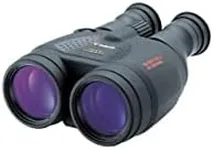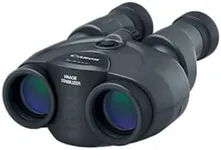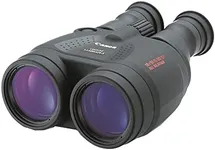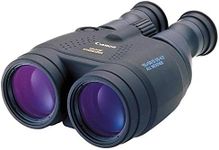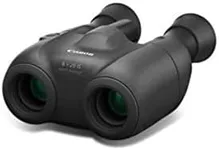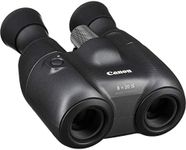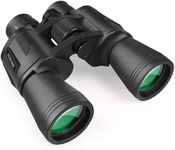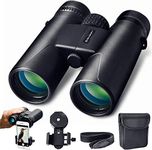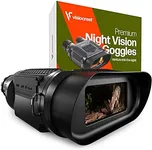Buying Guide for the Best Canon Stabilized Binoculars
Choosing the right pair of Canon stabilized binoculars can greatly enhance your viewing experience, whether you're bird watching, stargazing, or enjoying a sporting event. Stabilized binoculars are designed to reduce the effects of hand shake and movement, providing a clearer and steadier image. To make an informed decision, it's important to understand the key specifications and how they relate to your needs.MagnificationMagnification refers to how much closer the binoculars can make an object appear. For example, 10x magnification means the object will appear ten times closer than it does to the naked eye. Higher magnification can provide more detail but may also make the image shakier, which is why stabilization is important. If you're using binoculars for general purposes like bird watching or sports, 8x to 10x magnification is usually sufficient. For stargazing or long-distance viewing, you might prefer higher magnification, such as 12x or more.
Objective Lens DiameterThe objective lens diameter is the size of the front lenses, measured in millimeters. Larger lenses can gather more light, which is beneficial for low-light conditions and provides a brighter image. However, larger lenses also make the binoculars heavier and bulkier. For daytime use, a diameter of 25mm to 42mm is typically adequate. For nighttime or low-light conditions, you might want lenses that are 50mm or larger.
Image StabilizationImage stabilization is a feature that reduces the effects of hand shake and movement, providing a steadier image. This is particularly important for higher magnification binoculars, where even slight movements can cause significant image shake. Canon stabilized binoculars use electronic or mechanical systems to achieve this. If you plan to use the binoculars for extended periods or at high magnifications, strong image stabilization is crucial.
Field of ViewField of view is the width of the area visible through the binoculars, usually measured in feet at a distance of 1000 yards. A wider field of view allows you to see more of the scene without moving the binoculars, which is useful for tracking moving objects like birds or athletes. If you're using binoculars for general observation, a wider field of view is beneficial. For detailed viewing of stationary objects, a narrower field of view might be acceptable.
Weight and SizeWeight and size are important considerations, especially if you plan to carry the binoculars for extended periods. Heavier binoculars can be more tiring to hold, while larger models might be cumbersome to transport. Consider how you will use the binoculars and choose a model that balances performance with comfort. For casual use, lighter and more compact models are preferable. For more serious observation, you might accept a heavier model for better performance.
Durability and Weather ResistanceDurability and weather resistance are important if you plan to use the binoculars outdoors in various conditions. Look for features like waterproofing and rugged construction to ensure the binoculars can withstand rain, dust, and rough handling. If you're an outdoor enthusiast or plan to use the binoculars in challenging environments, these features are essential. For indoor or occasional outdoor use, they might be less critical.

